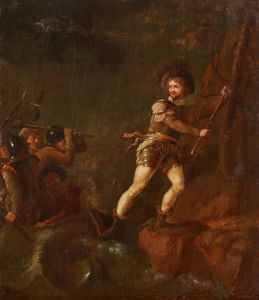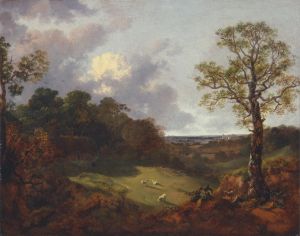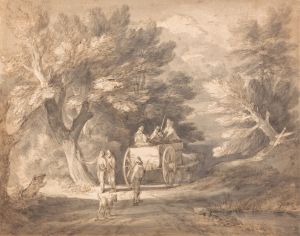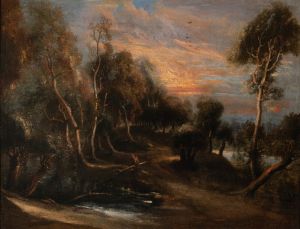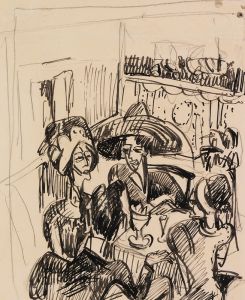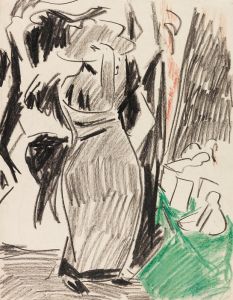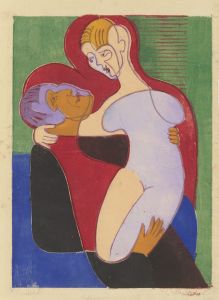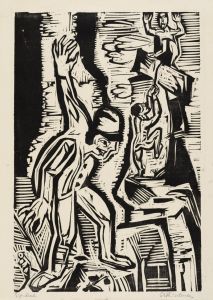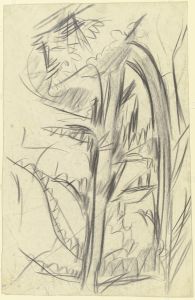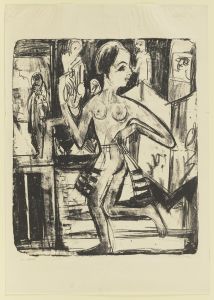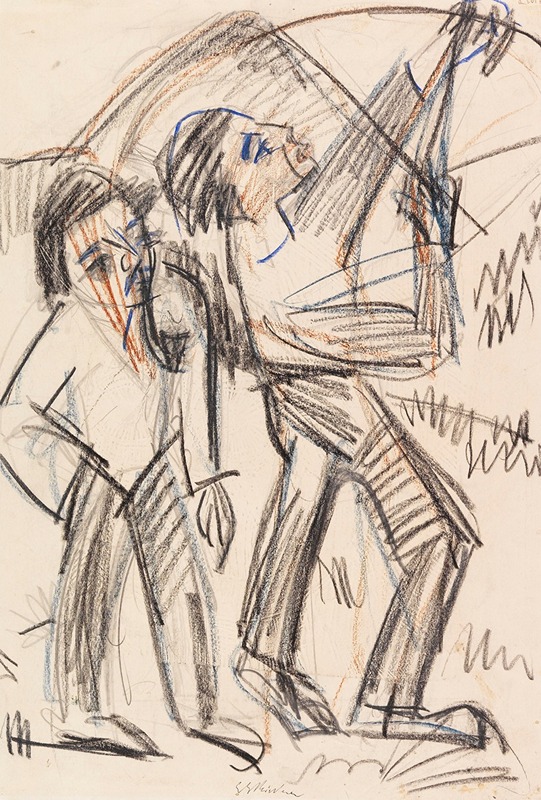
Bogenschütze
A hand-painted replica of Ernst Ludwig Kirchner’s masterpiece Bogenschütze, meticulously crafted by professional artists to capture the true essence of the original. Each piece is created with museum-quality canvas and rare mineral pigments, carefully painted by experienced artists with delicate brushstrokes and rich, layered colors to perfectly recreate the texture of the original artwork. Unlike machine-printed reproductions, this hand-painted version brings the painting to life, infused with the artist’s emotions and skill in every stroke. Whether for personal collection or home decoration, it instantly elevates the artistic atmosphere of any space.
Ernst Ludwig Kirchner (1880-1938) was a German expressionist painter and one of the founding members of the artist group Die Brücke (The Bridge), which played a pivotal role in the development of modern art in the early 20th century. Kirchner's work is characterized by its bold use of color, dynamic compositions, and a focus on the human figure, often exploring themes of modernity, urban life, and psychological tension.
"Bogenschütze" (The Archer) is one of Kirchner's notable works, created in 1935. This painting exemplifies Kirchner's mature style, which had evolved significantly since his early days with Die Brücke. By the mid-1930s, Kirchner's work had become more introspective and complex, reflecting his personal struggles and the turbulent political climate of the time.
In "Bogenschütze," Kirchner depicts a male figure in the act of drawing a bow, poised to release an arrow. The archer is rendered with elongated limbs and exaggerated features, a hallmark of Kirchner's expressionist approach. The figure's dynamic pose and the tension in his body convey a sense of imminent action and concentrated energy. The background is abstract, with bold, swirling patterns and vibrant colors that enhance the sense of movement and intensity.
Kirchner's use of color in "Bogenschütze" is particularly striking. He employs a vivid palette of reds, blues, and greens, which creates a dramatic contrast and heightens the emotional impact of the scene. The colors are applied in broad, expressive brushstrokes, adding to the painting's sense of urgency and vitality.
The subject of the archer can be interpreted in various ways. It may symbolize a struggle or conflict, both internal and external, reflecting Kirchner's own battles with mental health and the oppressive political environment of Nazi Germany. The archer's focused determination and readiness to act could also be seen as a metaphor for the artist's resilience and creative drive in the face of adversity.
Kirchner's life and career were deeply affected by the rise of the Nazi regime. In 1937, his work was labeled "degenerate art" by the Nazis, and many of his pieces were removed from German museums and either destroyed or sold. This condemnation had a profound impact on Kirchner, who had already been struggling with depression and anxiety. He continued to work and create art, but his health deteriorated, and he ultimately took his own life in 1938.
Despite the tragic end to his life, Kirchner's legacy as a pioneering expressionist artist endures. His innovative use of color, form, and composition has influenced countless artists and continues to be celebrated in exhibitions and collections worldwide. "Bogenschütze" stands as a testament to Kirchner's artistic vision and his ability to convey deep emotional and psychological states through his work.





